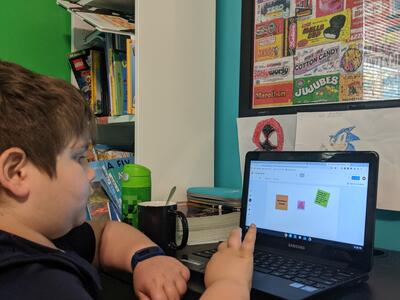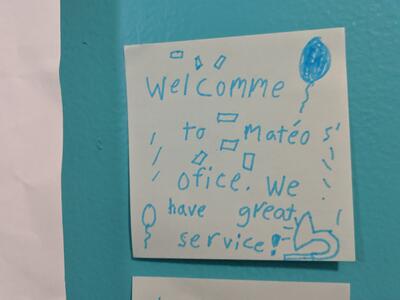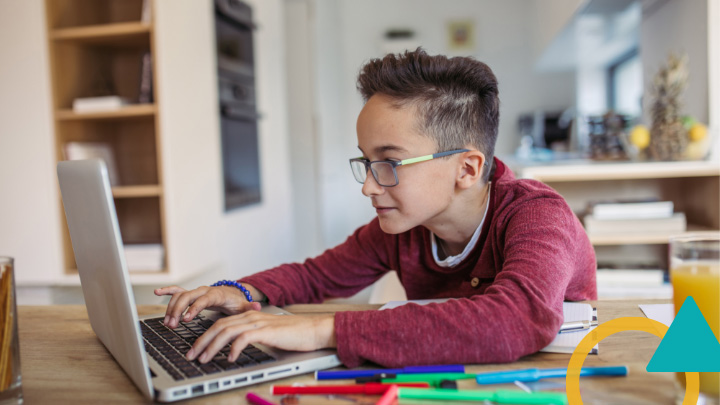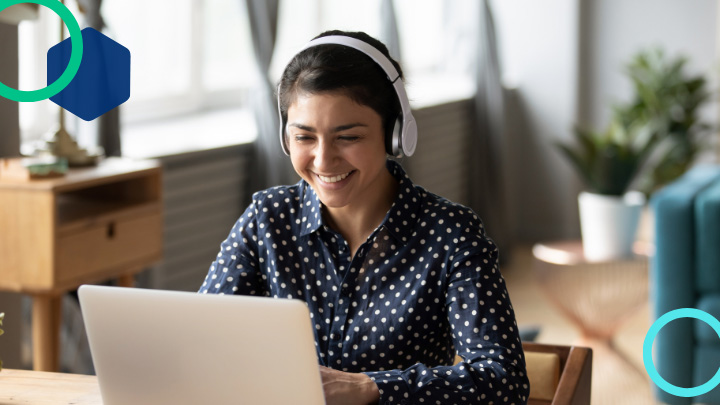It feels like just yesterday that we were all looking for the perfect daily schedule on Pinterest or Facebook: one that would help us support our kids to learn remotely during this unprecedented crisis. It would have to be a magic schedule, of course — one that would keep our kids busy, but also engaged and excited. One that would help them work independently — allowing us, their loving parents, to work productively from home.
Having spent 20 years teaching, coaching teachers, and supporting educators in leveraging technology tools to teach in a more student-centered way, I too thought that I might find this magic recipe, this harmonious balance.
Fast forward 7 (8, 9, who is still counting?) weeks later, and I think we can all agree on a few things:
- This is so much harder than we thought it would be.
- Many kids are not naturally wired to learn from home with autonomy.
- While this generation is comfortable with technology, it does not mean they will enjoy learning with it all day.
- Nothing can replace a real-life connection with a teacher and a class on a daily basis.
- Our kids are not just trying to learn from home, they are trying to understand and survive the emotional and physical toll of a pandemic from home.
- We are not all equal in front of this crisis. Some of us are more privileged than others, and my family falls into the former category, with both my wife and I continuing to work from home, earning paychecks, and being healthy so far. Many other people have to deal with much more trauma and loss than we have to deal with right now. Despite that, it is still incredibly hard for us, more than we had imagined it would be.
I hope I won’t disappoint you by sharing that the rest of this post is not going to be about how we found the secret formula or the magic daily schedule allowing us all to remain healthy, happy, and productive at this moment.
Nope.
We struggle every day. We cry, we laugh, we yell sometimes. My boys have possibly even heard me curse a few times (I swear; I never did that before ;-)). It is tough and it is rough, despite our position of privilege. But throughout all of this, we have had a vision that we stuck to, and it has helped us tremendously to keep our chin up in the toughest moments.

With this post, I just wanted to share some elements of this vision and some of the strategies we use to work toward it day after day.
1. Reflecting Together
A few years ago, we started a dinner routine during which we “shouted out” each other for something good we had done. Eventually, the routine evolved into a multi-step process involving sharing gratitude statements, objectives, affirmations, and lessons learned. We don’t always feel like using all of the categories every day. Sometimes one of us makes a joke of it, but for the most part, we run this circle every day for breakfast or dinner, and it really helps us learn together, appreciate each other, and continue to grow.
I adapted this process and turned it into an instructional strategy named GOAL a few months ago. I have seen many of the teachers that I coach use it in their classrooms, in person or remotely, to engage their students in daily reflections. I have also seen many of the leaders I coach use it to push themselves to reflect every day.
It is never too early to teach children the power of reflections, or too late to decide to add this healthy practice to your daily routine.
2. Teaching Our Kids to Set Goals and Plan Their Day
It would be so much easier if we could just xerox somebody else’s schedule onto our family, but it doesn’t work—and, believe me, we have tried.
What works better for us is empowering our kids to set goals based on the information they receive from their teachers and to organize their days around these goals and other objectives they have outside of school (playing outside or with Legos, reading for fun, watching “The Office,” etc.).
It takes a bit more time, uses quite a few post-it notes, or involves the daily creation of Jamboard goal posters, but ultimately it works better for us while teaching our kids an important life skill.

Does it sometimes lead to mismanagement of their time? Yes! But, if you use daily reflections, this mistake can be turned into a learning opportunity.
This BetterLesson strategy can help you find age-appropriate templates for student goal setting. Give it a try!
3. Giving Them Choices
Our kids struggle so much right now from a lack of control over their daily lives. There are so many aspects of this crisis that they struggle to understand and so many things they cannot do anymore.
The least we can do is to try to give them choices over their work, especially for the elements of their daily work plan that they can do at their own pace and at the time that works best for them.
It can be as simple as giving them a choice over the order of the activities they do, when they start them, when they take their breaks, or how they will get to show you or their teacher that they have mastered a topic. Giving them agency will go a long way in making them feel more in control of, and ultimately more engaged in, their learning.
If you have never given your kids a choice board, it is as simple as Tic-Tac-Toe, but it can go a long way in making them feel more excited about doing their work.
4. Giving Them a Voice
I don’t think we speak about this fact enough. Even if our kids get on Zoom calls or Google Meet calls, for the most part, they spend way more time passively or actively listening than they spend talking during this crisis. They don’t have the mic as much as their teacher, and they sure do not talk to their peers or collaborate with them as much.
So with that in mind, we try to give our kiddos a voice to talk about their work, explain what they are learning, and also what they are missing, every day. Sometimes the dinner table conversation won’t do it for that, so lately we have tried playing with Flipgrid as a way to challenge them daily to teach us what they learn or tell us what they are reading about. They really like recording videos of themselves! Here is my 7-year-old teaching us the difference between “et” and “est” in French.
We also sometimes assign them a group project leading to a dinner presentation. This strategy has great tools and tips to help you do this. Padlet is one of our family’s favorite tools, and we use it all the time for research projects on different dairy products, or for “birthday present wish list with links to Amazon.” With all of this practice, either of our boys could teach a master class on how to use Padlet!

5. Giving Everyone a Break — and Some Grace!
This might be the most important lesson we have learned: This is hard and unprecedented, and it can take a huge toll on everyone’s mental health. We can easily all feel like we are not doing the best job at pretty much anything we work on, from parenting to teaching to learning to working.
Give yourself and your kids grace for all you are trying to do. Cut them some slack, and remind them that it cannot be perfect—and that is absolutely okay. Give them some breaks, and let them do a bit more of the things they love, even if it means changing your screen time expectations or your healthy meal plans.
Mental and physical health right now are as important as the four assignments sitting in Google Classroom that they have yet to turn in. Putting love, health, and care first will help this daily adventure feel a bit less like a roller coaster, and a bit more like a learning journey.







